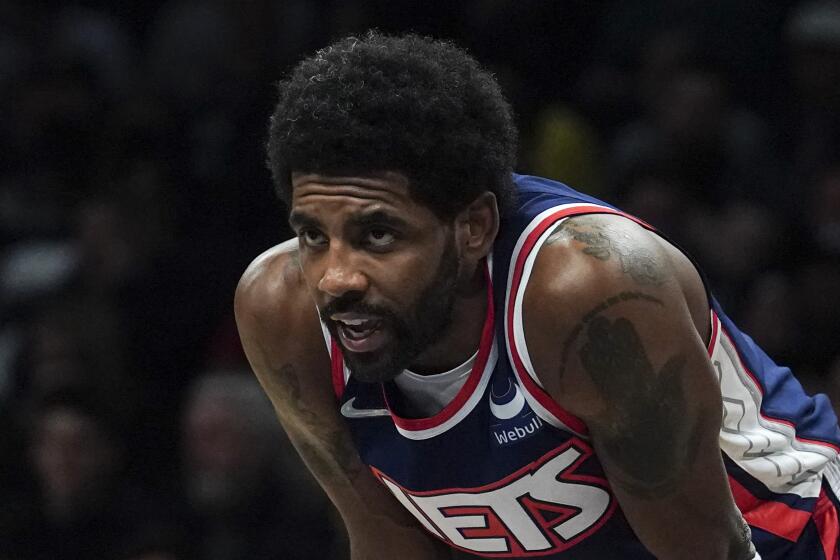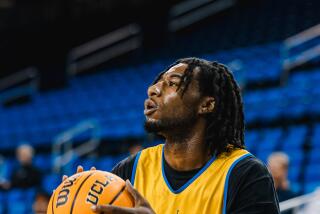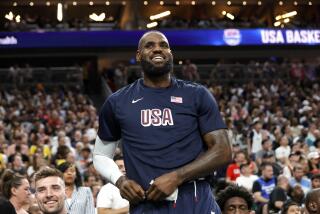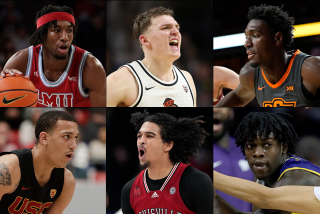NBA Summer League features first HBCU Showcase event
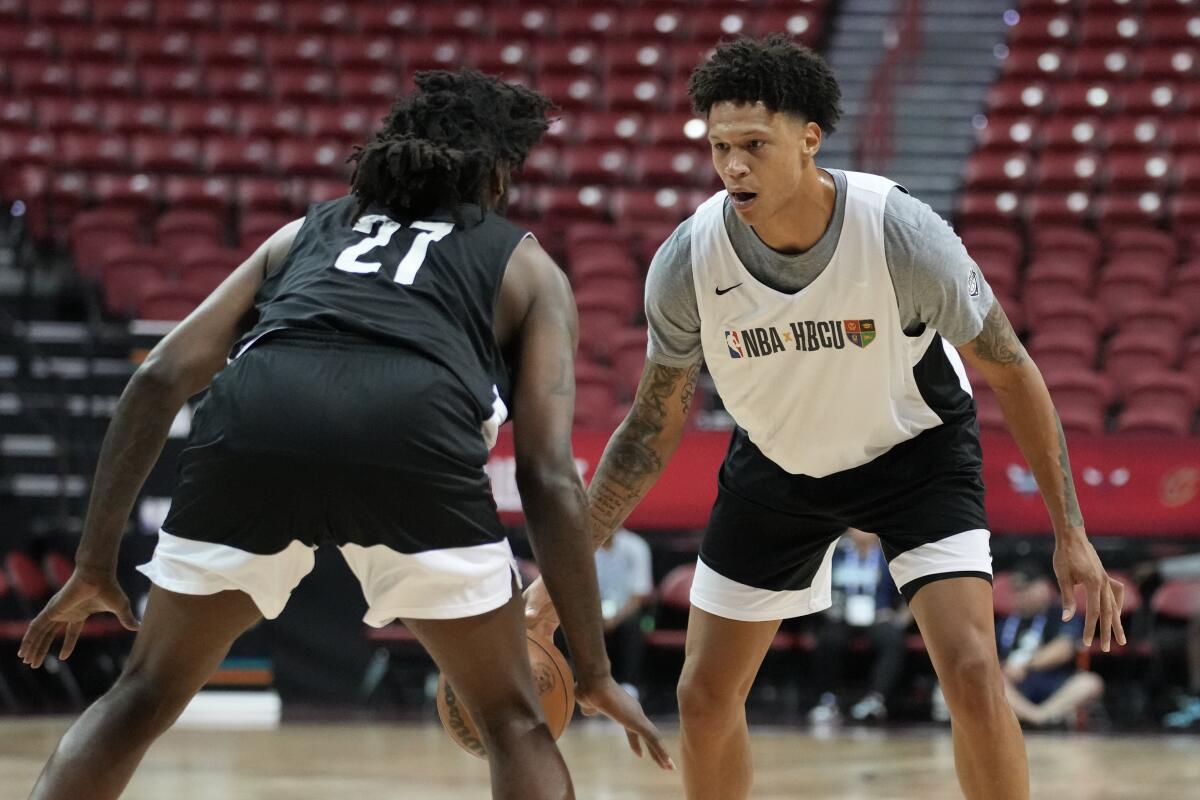
- Share via
LAS VEGAS — Najee Garvin played at three different colleges, the last being an HBCU. Being on an NBA court and wearing the NBA logo sometimes didn’t seem realistic.
He dealt with adversity after being arrested on an assault charge that was ultimately dropped. He went nearly two full years without playing a game. Garvin even became a cook at Chili’s to pay the bills.
On Monday, he wore that NBA logo after all.
Garvin was one of 28 players invited to the inaugural HBCU Showcase at NBA Summer League in Las Vegas. With a few dozen scouts in the stands, and four former NBA players — all of them now at historically Black colleges and universities — doing the coaching, Garvin ran through drills and played in scrimmages, getting an audition like no other in his career.
“A job,” Garvin said, when asked what would make the day a success for him. “I’m just authentic. A job. Nowadays, it’s hard to get a job. You’ve got to be put in the right place, around the right people, who know the right stuff.”
The NBA is hoping that it put that combination of right place, right people and right stuff together — with this showcase the latest way the league hopes to give HBCU players opportunities.
Some scouts and executives from around the NBA believe the Lakers made some good moves with limited money this offseason, yet others aren’t so sure.
There’s only one player from an HBCU school currently in the NBA — Robert Covington of the Clippers. No HBCU player has been drafted in a decade. Of the 30 rosters for teams in Las Vegas, only five featured an HBCU alum.
“I’m a visionary,” said Mo Williams, the former NBA guard who now coaches at Jackson State. “We have a lot of talent at the HBCU level that don’t get those invites to the NBA combine, to Portsmouth, the G League combine now, to things like that. We feel like those kids are talented enough to be professional athletes. This is a start.”
HBCU football players haven’t been left out of the spotlight. Some got the opportunity to showcase their talents in early February when the NFL hosted its first HBCU combine during Senior Bowl workouts.
The NBA has made strides for basketball players in recent years to address areas where it feels changes were needed. There are a record 15 Black coaches in the NBA, eight of those hires coming in the last two years.
The 2021 NBA All-Star Game generated at least $3 million for HBCUs through donations to scholarship funds — and the exposure those schools got during the game was worth even more. The league has started a paid fellowship program that places HBCU students in jobs with the league office and with NBA and WNBA teams. This past season, All-Star weekend included a game between Howard and Morgan State.
The attention turns to individual players.
“The showcase is a chance for us to continue creating opportunity for the world’s best talent,” said Morgan Cato, an NBA vice president who is about to become an assistant general manager with the Phoenix Suns. “There’s a perception of HBCU programs not necessarily being able to turn out talent. But all of our investments from the league office are about creating opportunity, creating access, and letting great players really have the opportunity to be seen by teams.”
Many NBA players have spoken out in the last couple of years about the need to help HBCU programs and improve the college experience for those players.
But there’s also a clear belief that if a player is good enough to play in the NBA — whether that player is at a Power Five school, or overseas, or at a low-major school — someone from the league will find them.
“One thing that is undeniable is this is the best league in the world,” said Portland guard Damian Lillard, who played his college ball at Weber State and was still a lottery pick. “We want HBCUs to get more recognition. We want them to have better funding, better facilities and resources. It could be a lot better. I think that’s what has to happen.”
The showcase lasted a few hours and was basically an NBA practice: Williams, Bethune-Cookman coach Reggie Theus, Fisk coach Kenny Anderson and LeMoyne-Owen coach Bonzi Wells broke the groups into four teams, and after some drills, the players went through scrimmages.
It’s still a longshot that any of the 28 make the NBA. But Monday might have been a step in the right direction toward getting another HBCU player to the league.
“Why hasn’t it happened? Let’s call a spade a spade: They’re not looking,” Anderson said. “The kids are not getting looked at.”
There might be a G League opportunity for some of these players; that was the path Covington took on his way to the NBA after going undrafted. Playing internationally is another option.
All 28 of the players are dreamers. And maybe Monday got them one step closer to where they want to ultimately be.
“Today is the opportunity of a lifetime,” said Garvin, who played at Charlotte, Nicholls State and Hampton. “No matter where, no matter what level, it’s all about getting a job. We’ve all been overlooked, all at the bottom of the pole, and today reminds us that we can still find our way to the top.”
More to Read
Go beyond the scoreboard
Get the latest on L.A.'s teams in the daily Sports Report newsletter.
You may occasionally receive promotional content from the Los Angeles Times.
